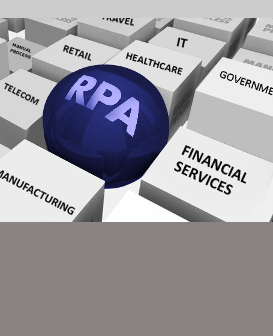Robotics Process Automation (RPA) allows organisations to automate tasks just as if a human being was doing them across applications and systems. Robotic automation interacts with the existing IT architecture with no complex system integration required.
It can be used to automate workflow, infrastructure, back office process which are labour intensive. These software bots can interact with in-house applications, websites, user portals etc. RPA is a software program which runs on an end user’s PC, laptop or mobile device. It is a sequence of commands which are executed by bots under some defined set of business rules.
The main goal of RPA is to replace repetitive and boring clerical tasks performed by humans, with a virtual workforce.
A simple example is when in any organisation, you need to fetch the bank statement, the steps involved are:
- Open the browser
- Type in the URL of the Bank
- Go to the login page
- Enter the login and password
- Select the option of downloading the statement
- Select the account number
- Select the period for which the statement is required
- Select the format in which you wish to download the statement (Maybe xlsx, pdf or csv)
- Download the file
- Rename the downloaded file to the convention defined
- Mail the file or maybe just save it in a specific folder
- What if all these 11 steps could be automated so that it could be achieved unattended at scheduled times of the week / month?
This is what RPA would be able to do.
While this is a very basic example, RPA can do complex but routine steps on a regular basis. All that we need to do is list down all the actions that happen on the screen in detail.
RPA can be used across all verticals ranging from Finance to Manufacturing to e commerce to Telecom.

